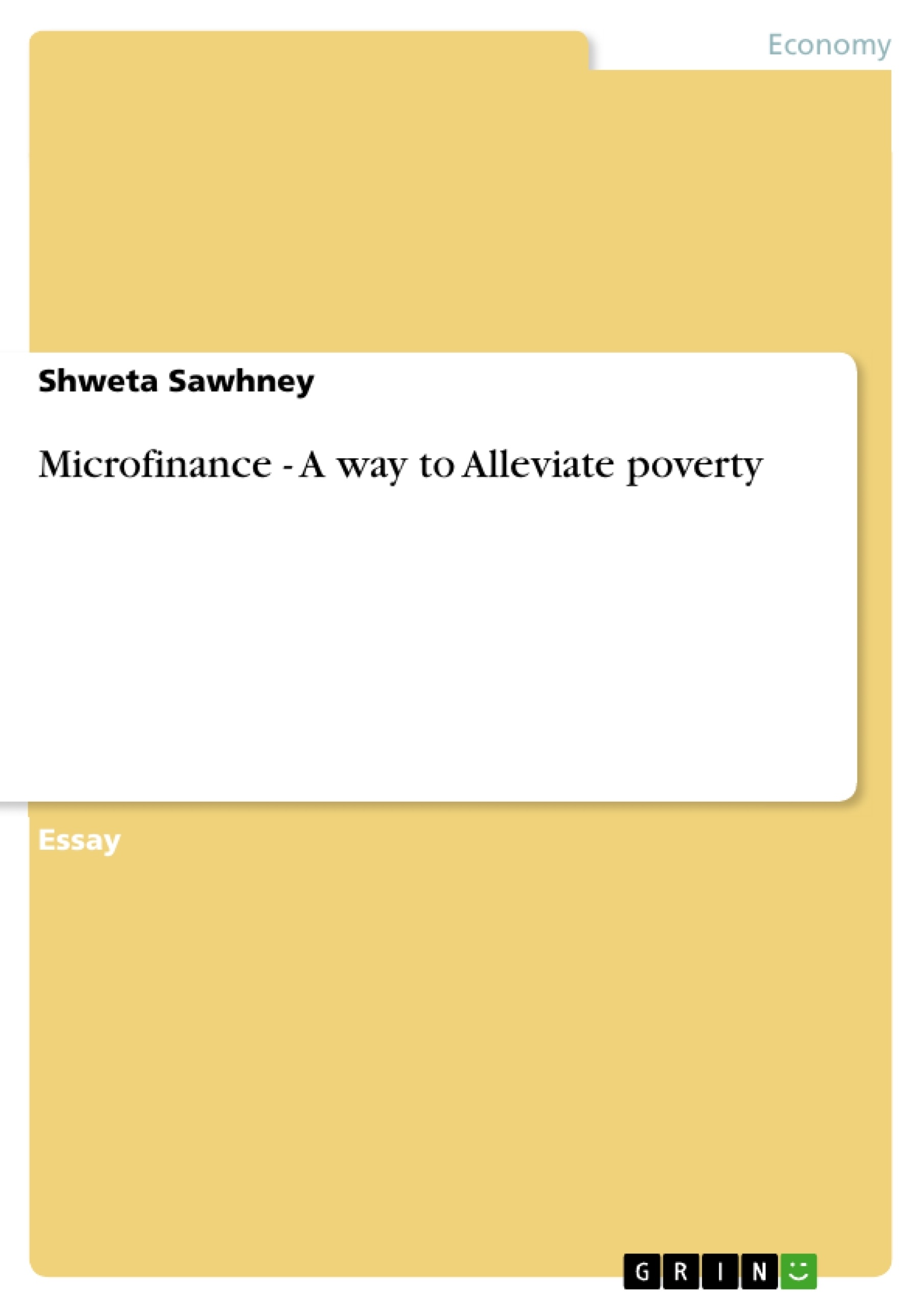The article traces the fruition of the Microfinance insurrection in India as a potent tool for poverty mitigation and women empowerment. Where institutional finance failed Microfinance delivered. In a country like India, where almost 70 per cent of the population is in the rural areas, with little or no access to main stream financing options, microfinance has a huge role to play and a huge population to uplift. The paper discusses the present scenario of microfinance Institutions (MFIs) in India. In spite of the impressive figures, the supply side of microfinance in India is still presently abhorrently inadequate to fill the fissure between demand and supply but it holds the promise to act as a great opportunity for the financial sector and the economy as a whole.
Inhaltsverzeichnis (Table of Contents)
- INTRODUCTION
- MICROFINANCE CLIENTS
- MICROFINANCE DELIVERY VEHICLES
- THE IMPACTS OF MICROFINANCE
- CHALLENGES AHEAD
Zielsetzung und Themenschwerpunkte (Objectives and Key Themes)
This text explores the role of microfinance in alleviating poverty, particularly focusing on the Indian context. It examines the nature of microfinance, its clients, delivery mechanisms, and its impact on individuals and communities.
- The growth and importance of microfinance in addressing poverty
- The characteristics and needs of microfinance clients
- Different models and vehicles for delivering microfinance services
- The impact of microfinance on individuals, businesses, and communities
- Challenges and opportunities for microfinance in India
Zusammenfassung der Kapitel (Chapter Summaries)
- INTRODUCTION: This chapter introduces the concept of microfinance and its potential to improve the lives of low-income populations. It highlights the growing importance of microfinance in India and its role in enabling access to financial services for those traditionally excluded.
- MICROFINANCE CLIENTS: This chapter delves into the characteristics of typical microfinance clients, including their socioeconomic status, income-generating activities, and the types of financial services they require. It also discusses the limitations of data on poverty status among clients.
- MICROFINANCE DELIVERY VEHICLES: This chapter explores the various institutions and organizations involved in delivering microfinance services. It examines different models, including non-profit organizations, credit unions, commercial banks, and specialized microfinance institutions.
- THE IMPACTS OF MICROFINANCE: This chapter examines the various ways microfinance loans are used by clients, including starting new businesses, expanding existing ones, and meeting household needs. It also discusses the impact of microfinance on entrepreneurship and the importance of working capital.
- CHALLENGES AHEAD: This chapter highlights the challenges faced by microfinance in India, including limited access to financial services for a large portion of the population, the need for technology and human resources, and regulatory hurdles.
Schlüsselwörter (Keywords)
Microfinance, poverty alleviation, financial services, low-income populations, Self Help Groups (SHGs), Micro Finance Institutions (MFIs), non-governmental organizations (NGOs), credit unions, commercial banks, working capital, regulation, challenges, opportunities, India.
- Citar trabajo
- HOD (Academics) Shweta Sawhney (Autor), 2011, Microfinance - A way to Alleviate poverty, Múnich, GRIN Verlag, https://www.grin.com/document/179122



